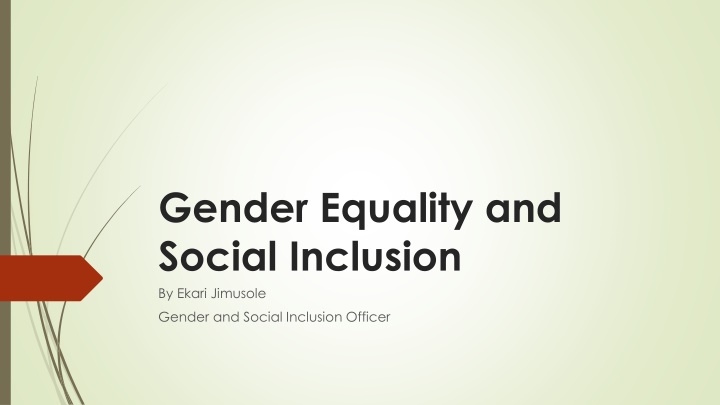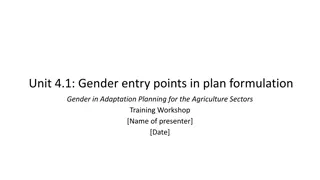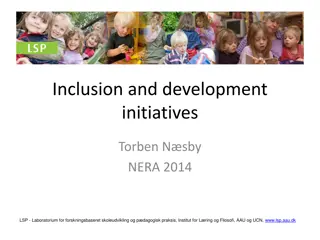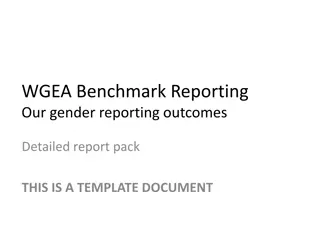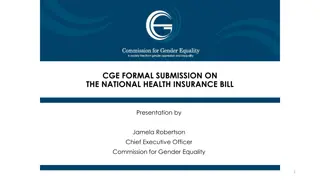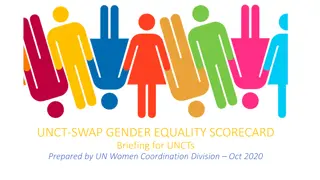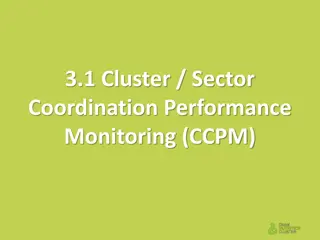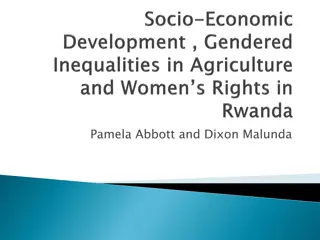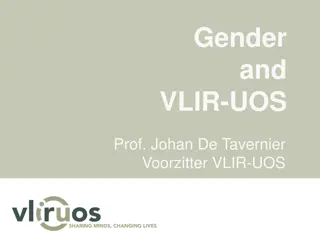Gender Equality and Social Inclusion by Ekari Jimusole
This content delves into gender transformation outcomes, targeting and reporting strategies, possible interventions, and nutrition indicators with a focus on empowering women and marginalized groups. It discusses empowering women in decision-making, leadership, and access to resources for a more inclusive society.
Download Presentation

Please find below an Image/Link to download the presentation.
The content on the website is provided AS IS for your information and personal use only. It may not be sold, licensed, or shared on other websites without obtaining consent from the author.If you encounter any issues during the download, it is possible that the publisher has removed the file from their server.
You are allowed to download the files provided on this website for personal or commercial use, subject to the condition that they are used lawfully. All files are the property of their respective owners.
The content on the website is provided AS IS for your information and personal use only. It may not be sold, licensed, or shared on other websites without obtaining consent from the author.
E N D
Presentation Transcript
Gender Equality and Social Inclusion By Ekari Jimusole Gender and Social Inclusion Officer
1. Gender Transformation Outcome Indicator: Percentage of women (70%) reporting improved empowerment index at project level Dimension of Empowerment Meaning Key Constraints Production Input in productive decisions Autonomy in production Lack of input in Productive decisions Insufficient autonomy in production Resources Ownership of assets Purchase, Sale, transfer of assets Inadequate ownership of assets Lack of input in decisions over purchase, sale or transfer of assets Insufficient access to and control over credit Income Control over the use of income Lack of control over use of income
1. Gender Transformation Outcome Indicator: Percentage of women (70%) reporting improved empowerment index at project level Dimension of Empowerme nt Leadership Meaning Key constraints Group member/leader Speaking in public Workload Leisure Lack of group membership Lack of group/leadership representation Discomfort speaking in public Dissatisfaction with workload Inadequate leisure Time
Targeting and reporting 127,000 direct beneficiaries 300,000 households including indirect beneficiaries 55% Women, 50% Youth, 5% Persons with Disabilities Sex disaggregated data Age disaggregated data (18-24, 25-35, Over 35) Disability disaggregated data
Gender Transformation Possible Interventions: Gender Action Learning System (GALS) Gender Dialogue sessions Male engagement Leadership quotas Access to resources and technologies Promote-labor saving technologies Benefits from value chain activities
2. Nutrition Output Indicator: Number of people provided with targeted support to improve their nutrition Outcome Indicator: Number of women reporting improved quality of their diets (MDDW) Nutrition training Establish seed multiplication gardens for indigenous species including orange flesh sweet potato and vines, fruit trees Conduct community mobilisation on integrated homestead farming for the promotion of consumption of micronutrient- rich foods Promote food safety
2. Nutrition Awareness and Advocacy campaigns for the production and consumption of diversified and high nutritious food crops including indigenous crops, fish and animals such as poultry, small ruminants and milk-producing animals Cooking demonstrations and food displays to promote dietary diversity Male engagement Provision of small ruminants, seeds and fruit trees for vulnerable households Revamping dysfunctional nutrition coordination structures
DISABILITY INCLUSION Outreach indicator: Number of PWD reached with project interventions specific interventions targeting persons with disabilities
